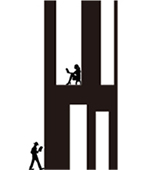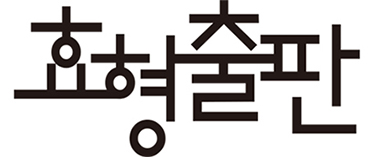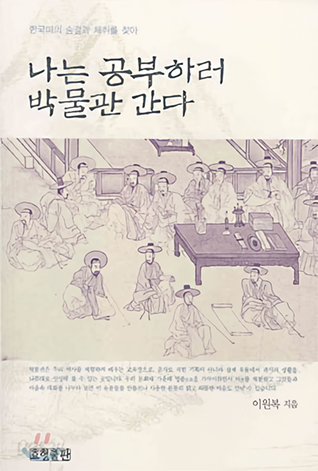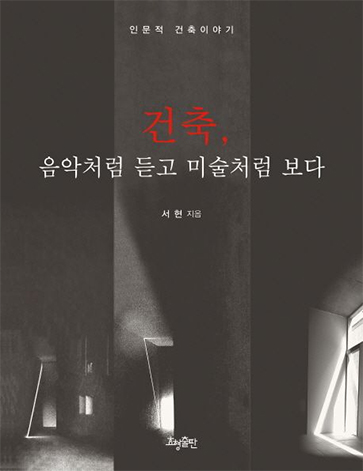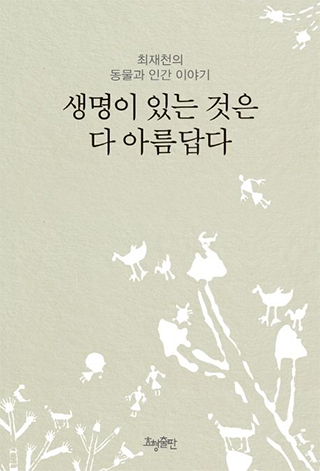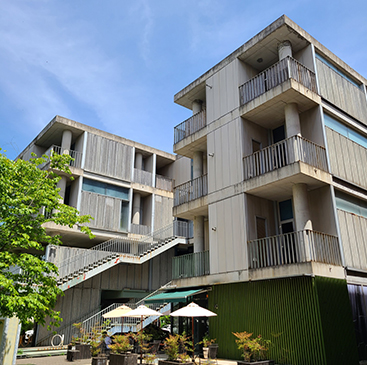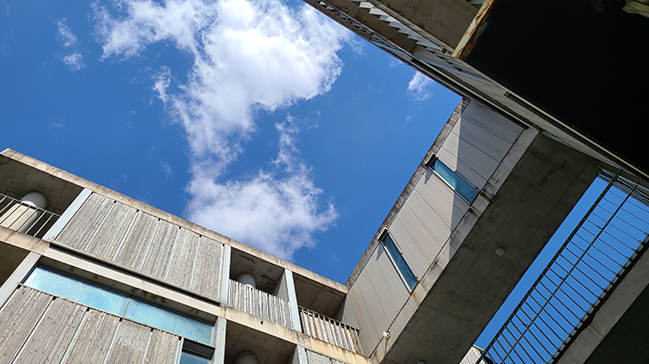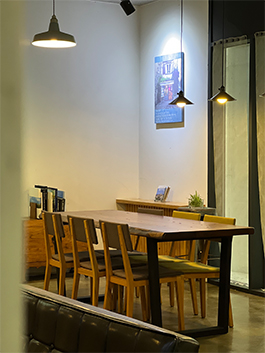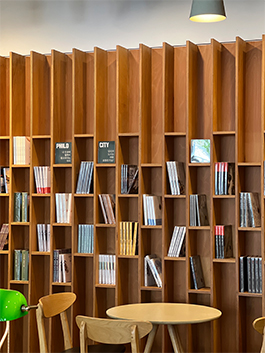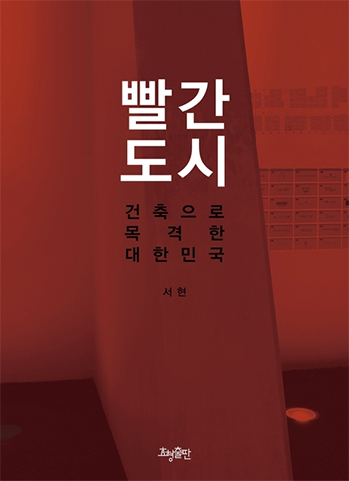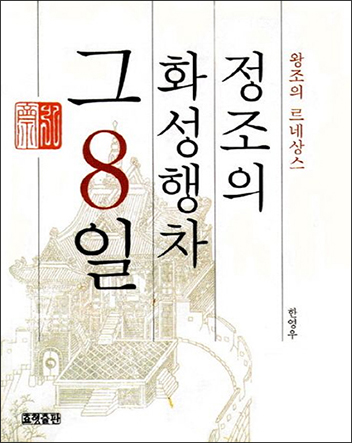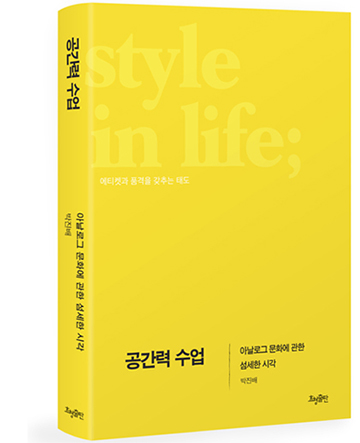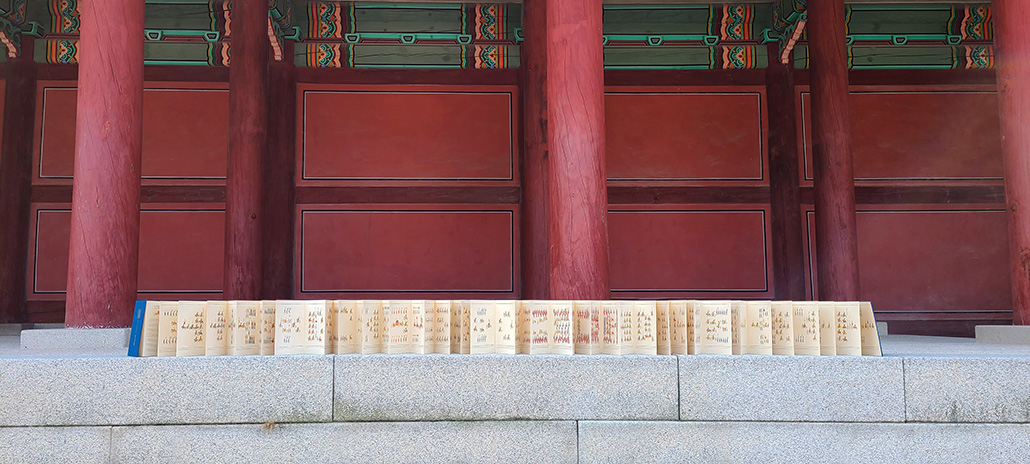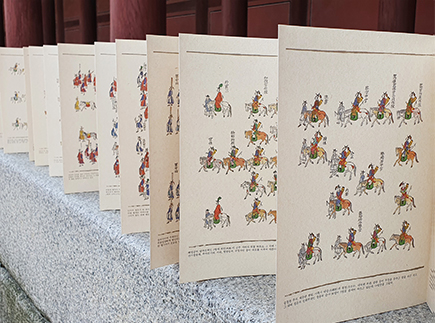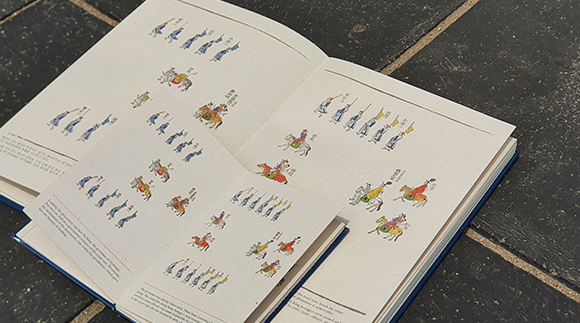|
Korean Publishers
Publisher Hyohyung Dreaming of a warm city where art breathes
2024.02.19
Publisher Hyohyung has been printing books on architecture, space, and art for 30 years, just like building a house brick by brick. Perhaps the key to this longevity is Hyohyung’s passion for these fields. Indeed, its publishing list is filled with authentic books on architecture, space, and art. Every book is worthy of its own value, but Hyohyung’s books are more valuable to the readers as they are written with the mission of the creators and the sincerity of the writers. Hyohyung plans various content and events so that readers can encode books in their minds and even have experiences through them, and conveys liberal arts knowledge that will help future generations. Following is an interview with Hyohyung, a publishing house that produces books with the utmost sincerity so that the scent of art can permeate our daily lives, and so that our society can become a warm city where art breathes.
Logo of Hyohyung

It’s a pleasure to have you with us on K-Book Trends. Please introduce Hyohyung to our international readers as well as the meaning of the company’s name.
The name “Hyohyung” reflects our dedication to future generations. It was named after the CEO’s two sons, Hyo-Keun and Hyung-Keun, one letter after the other. The company started with the dream of becoming a publisher that produces books that you won’t be ashamed to give to your children, a publisher that will continue to exist for generations.

Hyohyung celebrates its 30th anniversary this year. Congratulations! How do you feel? Could you also please briefly tell us about the path that Hyohyung has been walking on?
The 1990s was a time when we made headway in the field of popular humanities by presenting stylish editing skills under the banner of “democratizing the humanities,” as well as releasing “hybrid” features that crossed the boundaries between the humanities, arts, and sciences. Several timeless titles, such as I Go to Museums to Study, published in 1997, Architect: Listen Like Music and Look Like Art by architect Seo Hyun, beloved for more than 20 years, All Live Beings Are Beautiful, a natural science essay by chair professor Choi Jae-Cheon at Ewha Womans University, and Bernard Olivier’s Longue Marche, the bible of walking tours, are still loved by many readers.
* K-Book Trends Vol. 44 – Go to the article about professor Choi Jae-Cheon
In addition, we have published a variety of projects that showcase the beauty and depth of Korean culture. The pinnacle of these projects was Painting Depicting King Jeongjo’s Visit to Hwaseong in 1795, which has been called “the culmination of the Joseon Dynasty Renaissance.” It is a masterpiece revived by the late Han Young-Woo, former director of Seoul National University’s Gyujanggak Library (a professor emeritus at Seoul National University), who applied contemporary colors to the black-and-white woodcut “Banchado” (court painting of royal processions). It is a celebrated book that is still often talked about when you talk about publisher Hyohyung.
I Go to Museums to Study, Architecture: Listen Like Music and Look Like Art, and All Live Beings are Beautiful

Your major focus has been humanities books about architecture, space, and art. Is there a special reason for it?
The book Architecture: Listen Like Music and Look Like Art, published in 1998, was quite a sensation at the time. It expanded the field of architecture from the realm of civil engineering to the humanities and arts. Since then, collaborations between architects and architectural scholars increased, and books about architecture, city, and space have naturally followed.

Since your field of publication is very specific, it seems that promotions and marketing are crucial to increasing the number of readers. What are some of your promotion and marketing strategies to better communicate with readers?
In addition to the basic elements like influencers, YouTuber placements, newspaper ads, and magazine features, we try to find our own way. If a book is just a series of words, it is dead content. We want to make sure that the print gets into the readers’ heads and turns into an experience, and there are many ways to do that - book talks, book parties, book concerts, experiences, and more. We have a cafe in our Paju Book City office called “Book Cafe Noon.” Book Cafe Noon aims to be a space where books, readers, and writers can come together, which is why we organize various events there. The strategy is to plan events that fit the content of the book, the needs of the readers, and the season, and to approach those who have already become readers as a more intimate publishing brand.
We hope to introduce content from various fields, to be a strong support for readers.

Since you publish books on architecture, space, and art, the Paju office building seems very cool. Book Cafe Noon is also the first cafe in Paju Book City. What is Book Cafe Noon like as a reading space?
Since Paju Book City started as an industrial complex, most of the buildings are technically factories. It is nothing more than pretty factories. So, the area would only be bustling with people during rush hour, and the rest of the time, it would be like a ghost town. We thought that the first step to transforming the “book factory district” into a “book city” was to create book cafes, and we were the first to open a book cafe that was open all the time. Later, regulations got loosened, and other publishers and businesses followed suit - and here we are today.
Outside views of Hyohyung
Inside views of Book Cafe Noon

It is impressive that the publisher’s introduction reads, “Dreaming of a warm city where art breathes.” What is the “warm city where art breathes” that Hyohyung dreams of, and what criteria do you follow to plan and publish your books to achieve this?
We don’t think of the approaching era of AI as a “crisis of the humanities,” but rather as an “era of threatened humanity.” Perhaps the last defense of humanity will be the field of art. Recently, there have been quite a few gloomy forecasts of the future, such as “low birthrate,” “disappearing jobs,” and “disappearing rural areas.” We want to give a message with a sense of humanity that can serve as a light to those who are worried about the future. We hope to introduce content from various fields such as philosophy, art, and music, centered on architecture, to be a strong support for them. So, our publishing house emphasizes art, talks about compassionate humanity, and speaks about the city, which is the architectural space we live in. And all that in one sentence: “We dream of a warm city where art breathes.”

New title Urban Controversialist was published last January. Could you please introduce this book to our readers?
The book Urban Controversialist can be shortened to “a spicy reading of cities by humanistic architect Seo Hyun.” It is a book that takes a microcosmic and specific look at the landscape we encounter in our daily lives, as we walk down the street, and relentlessly takes a scalpel to its absurdities and dissonances. While it tackles serious topics like politics and elections, it is still a fun read with punchy sentences and hilarious phrases. It is a great follow-up to Red City, which came out in 2014. It is not a criticism for critique’s sake - it helps establish a “healthy perspective of an architect reading our society.”
Urban Controversialist and Red City

You also have a separate brand called Nabizang Books, although it doesn't have many published books. What kind of brand is Nabizang Books?
Nabizang Books launched as a lifestyle publishing brand, but hasn’t released a new book in nearly a decade. In the early 2000s, it was the brand that put out relatively lighter and trendier books while Hyohyung published in-depth humanities and arts books. At some point, the line between Hyohyung and Nabizang Books got blurry, and it ceased operation. In the past, Nabizang Books used to publish books about cooking recipes, movies, and illustrated travel essays.

Could you please introduce the book on Hyohyung’s philosophy to our readers as the company celebrates its 30th anniversary?
The book King Jeongjo’s Eight-day Procession to Hwaseong was written by the late Han Young-Woo, professor emeritus at Seoul National University, a master of Korean studies, which revisits the meaning of King Jeongjo’s procession to Hwaseong in 1795, the culmination of the culture of the Joseon Dynasty. Published in 1998, the book made us look back on King Jeongjo’s achievements and a glorious moment in our history. Since its publication, interest in King Jeongjo and “banchado” has permeated every corner of our society. The book has proven the power of published content and how art can change our daily lives. Also, Painting Depicting King Jeongjo’s Visit to Hwaseong in 1795, which Professor Han Young-Woo and his research team restored to life in King Jeongjo’s Eight-day Procession to Hwasung, was reprinted as a cultural art product and selected as one of the “100 Most Beautiful Books in Korea” at the Frankfurt Book Fair in 2005.
King Jeongjo’s Eight-day Procession to Hwaseong and A Class on Spatial Power
Painting Depicting King Jeongjo’s Visit to Hwaseong in 1795

We look forward to dreaming together of a city that will be warmer with Hyohyung’s books. Last but not least, tell us about your new book or future goals.
We envision a warm city where art breathes as much today as it did yesterday. We plan to present a variety of space, art, and philosophy content to Korean society for future generations. In 2024, starting with Urban Controversialist, we will publish books such as Beyond Art, which explores stories beyond music and art, Seoul is Architecture, a travel book that explores the beauty and meaning of modern architecture in Seoul, and Palace and Scenery, which teaches readers how to appreciate the five palaces from the Joseon Dynasty. We also have two upcoming essays on food. It will teach us what it means to live a flavorful life. Plus, we are working on a new book about the living spaces of people who live in places other than apartments.
#Publisher Hyohyung#Architecture#Space#Art#Book Cafe Noon |
Pre Megazine
-

Jakkajungsin Publishing Co.
VOL.69
2024.04 -

Writer Yun Jung-Eun
VOL.69
2024.04 -

Jumping Books Publishing House
VOL.68
2024.03 -

Writer Kim Hwa-Jin
VOL.68
2024.03 -

Publisher Hyohyung
VOL.67
2024.02 -

Writer Minha
VOL.67
2024.02 -

Almond Publishing
VOL.66
2024.01 -

Writer Kwon Jung-Min
VOL.66
2024.01 -

Hakgojae Publishers
VOL.65
2023.12 -

Writer Kim Hye-Jung
VOL.65
2023.12 -

Eidos Publishing House
VOL.64
2023.11 -

Writer Hwang In-Chan
VOL.64
2023.11 -

Munhakdongne
VOL.63
2023.10 -

Writer Chang Kang-myoung
VOL.63
2023.10 -

Happywell Publishing
VOL.62
2023.09 -

Writer Baik Soulinne
VOL.62
2023.09 -

Dasan Contents Group (Dasan Books)
VOL.61
2023.08 -

Writer Lim Kyoung-Sun
VOL.61
2023.08 -

SpringSunshine Publishing Co.
VOL.60
2023.07 -

Writer Lee Kyung-Hye
VOL.60
2023.07 -

Human Cube
VOL.59
2023.06 -

Doctor Jeong Jae-Seung
VOL.59
2023.06 -

Anonbooks
VOL.58
2023.05 -

Writer Son Bo-Mi
VOL.58
2023.05 -

Namhaebomnal
VOL.57
2023.04 -

Writer Kim Bo-Young
VOL.57
2023.04 -

Hugo Publishing
VOL.56
2023.03 -

Writer Cho Kwang-Hee
VOL.56
2023.03 -

Balgeunmirae Publishing Co.
VOL.55
2023.02 -

Writer Lee Byung-Ryul
VOL.55
2023.02 -

Wisdom House, Inc
VOL.54
2023.01 -

Writer Jeong Jia
VOL.54
2023.01 -

Humanitas
VOL.53
2022.12 -

Writer Kim Yeon-Su
VOL.53
2022.12 -

Songsongbooks
VOL.52
2022.11 -

Writer Eun Hee-Kyung
VOL.52
2022.11 -

Bombom Publishing Co.
VOL.51
2022.10 -

Writer Jiwon Yu
VOL.51
2022.10 -

Hangilsa Publishing Co., Ltd.
VOL.50
2022.09 -

Writer Kim Won-Young
VOL.50
2022.09 -

Moksu Publishing Company
VOL.49
2022.08 -

Writer Yoo Sun-Kyong
VOL.49
2022.08 -

Next Wave
VOL.48
2022.07 -

Writer Park Sang-Young
VOL.48
2022.07 -

A Thousand Hopes
VOL.47
2022.06 -

Writer Bora Chung
VOL.47
2022.06 -

Woongjin ThinkBig
VOL.46
2022.05 -

Dr. Oh Eun-Young
VOL.46
2022.05 -

JECHEOLSO Publishing House
VOL.45
2022.04 -

Writer Jang Ryu-Jin
VOL.45
2022.04 -

Changbi Publishers
VOL.44
2022.03 -

Writer Kim Ho-Yeon
VOL.44
2022.03 -

Mati Books
VOL.43
2022.02 -

Writer Lee Kkoch-Nim
VOL.43
2022.02 -

Picturebook Gongjackso
VOL.42
2022.01 -

Writer Kim Sang-Wook
VOL.42
2022.01 -

Writer So-yeon Park
VOL.42
2022.01 -

Writer Yoo Eun sil
VOL.42
2022.01 -

Kungree Press
VOL.41
2021.12 -

Writer Kim Lily
VOL.41
2021.12 -

Writer Park Yeon-jun
VOL.41
2021.12 -

Writer Yi Hyeon
VOL.41
2021.12 -

A deeper world told through picture books 'Iyagikot Publishing (Story Flower)'
VOL.12
2019.06 -

Author Jeon Min-hee
VOL.12
2019.06 -

Illustrator Kim Hwan-Young
VOL.13
2019.07 -

Travelers sailing through the sea of knowledge - 'Across Publishing Group Inc.'
VOL.13
2019.07 -

Genre Novel Publisher 'Arzak Livres'
VOL.14
2019.08 -

Author Lee Yong-han
VOL.14
2019.08 -

Wookwan Sunim
VOL.15
2019.09 -

East-Asia Publishing
VOL.15
2019.09 -

Author Jo Jung-rae
VOL.16
2019.10 -

EunHaeng NaMu Publishing
VOL.16
2019.10 -

Writer Heo Kyo bum
VOL.40
2021.11 -

Writer Kim So-Young
VOL.40
2021.11 -

Author-illustrator Kim Sang Keun
VOL.40
2021.11 -

ACHIMDAL BOOKS
VOL.40
2021.11 -

Author Kang Gyeong-su
VOL.17
2019.11 -

Moonji Publishing Belongs to the Literary Community
VOL.17
2019.11 -

Author Kim Yun-jeong
VOL.18
2019.12 -

I-Seum
VOL.18
2019.12 -

Kim Cho-Yeop
VOL.19
2020.02 -

Creating a window into the future with books
VOL.19
2020.02 -

Author Serang Chung
VOL.20
2020.03 -

Hey Uhm
VOL.20
2020.03 -

Writer Lim Hong-Tek
VOL.21
2020.04 -

BIR
VOL.21
2020.04 -

Writer Song Mikyoung
VOL.39
2021.10 -

Author-illustrator Kim Dong Su
VOL.39
2021.10 -

Writer Lee Seula
VOL.39
2021.10 -

Tabi Books
VOL.39
2021.10 -

Writer Kim Soo-hyun
VOL.38
2021.09 -

Author-illustrator Lee Myoung Ae
VOL.38
2021.09 -

Writer Hwang Sunmi
VOL.38
2021.09 -

Kidari Publishing Co.
VOL.38
2021.09 -

Writer Sohn Won-Pyung
VOL.22
2020.05 -

Woods of Mind's Books
VOL.22
2020.05 -

Writer Heungeul
VOL.23
2020.06 -

Gloyeon
VOL.23
2020.06 -

Maumsanchaek
VOL.24
2020.07 -

Winners of the 2021 Bologna Ragazzi Award
VOL.37
2021.08 -

Picture book artist Lee Suzy
VOL.37
2021.08 -

Author-illustrator Yi Gee Eun
VOL.37
2021.08 -

Hubble
VOL.37
2021.08 -

Writer Baek Se-Hee
VOL.25
2020.08 -

Bearbooks Inc.
VOL.25
2020.08 -

Author Baek Hee-Na
VOL.26
2020.09 -

Yuksabipyoungsa
VOL.26
2020.09 -

Writer Kang Hwa-Gil
VOL.27
2020.10 -

Kinderland (Bandal)
VOL.27
2020.10 -

Writer Ha wann
VOL.36
2021.07 -

Author-illustrator Myung Soojung
VOL.36
2021.07 -

Writer Jung Yeo-Wool
VOL.36
2021.07 -

Publisher EcoLivres
VOL.36
2021.07 -

Writer Lee Geumi
VOL.28
2020.11 -

Sakyejul
VOL.28
2020.11 -

Writer Kim Keum-Hee
VOL.29
2020.12 -

Geulhangari
VOL.29
2020.12 -

Writer Cheon Seon-Ran
VOL.30
2021.01 -

Hyang Publishing House
VOL.30
2021.01 -

Writer Lee Hee-Young
VOL.31
2021.02 -

Sanzini
VOL.31
2021.02 -

Publisher Prunsoop
VOL.32
2021.03 -

Writer Sim Yun-Kyung
VOL.32
2021.03 -

Hanbit Media
VOL.35
2021.06 -

Hyeonamsa
VOL.33
2021.04 -

Author-illustrator Noh Inkyung
VOL.33
2021.04 -

Writer Cho Won-Jae
VOL.35
2021.06 -

Writer Kim Jung-Mi
VOL.34
2021.05 -

Safehouse Inc.
VOL.34
2021.05


